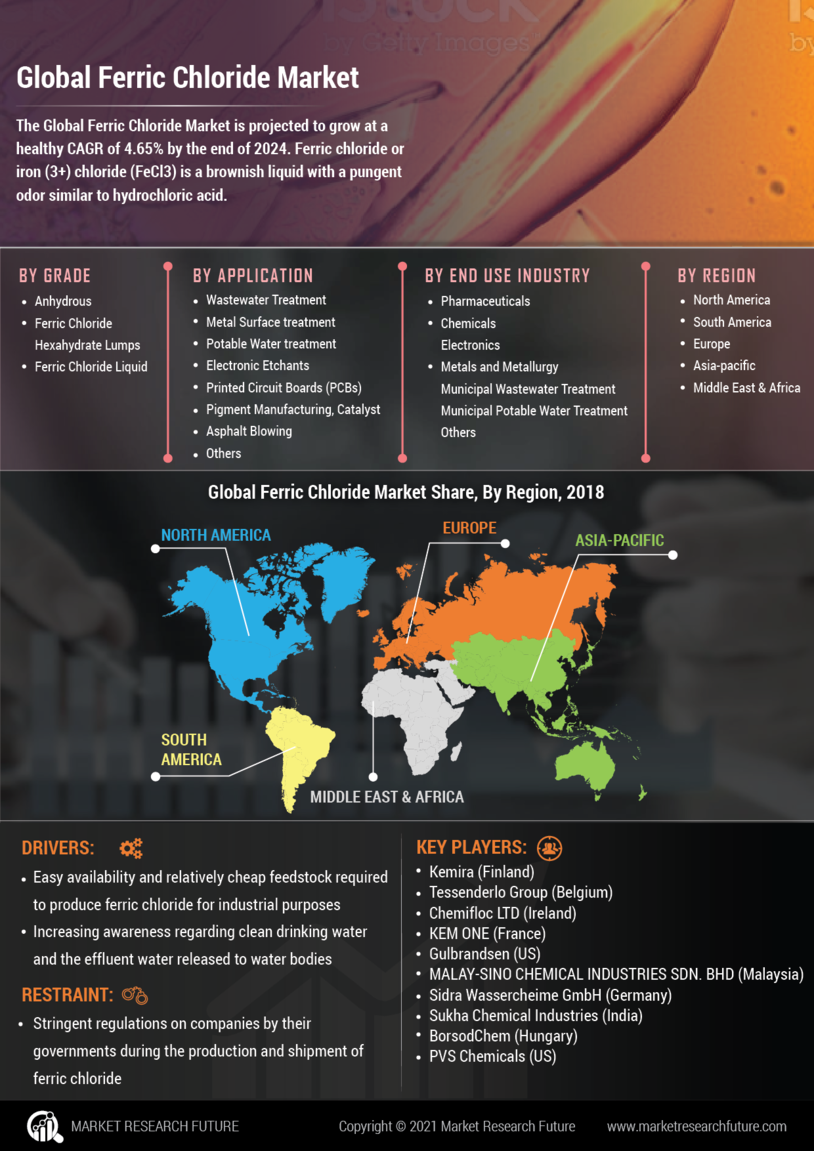The Ferric Chloride Market is currently characterized by a dynamic competitive landscape, driven by increasing demand across various sectors, including water treatment, electronics, and pharmaceuticals. Key players such as Hawkins Inc (US), BASF SE (DE), and Chemtrade Logistics Inc (CA) are strategically positioning themselves through innovation and regional expansion. Hawkins Inc (US) focuses on enhancing its production capabilities to meet the rising demand, while BASF SE (DE) emphasizes sustainability in its operations, aiming to reduce environmental impact. Chemtrade Logistics Inc (CA) is leveraging its extensive distribution network to optimize supply chain efficiency, thereby shaping a competitive environment that is increasingly focused on operational excellence and sustainability.
The business tactics employed by these companies include localizing manufacturing and optimizing supply chains to enhance responsiveness to market demands. The Ferric Chloride Market appears moderately fragmented, with several players vying for market share. However, the collective influence of major companies is significant, as they drive innovation and set industry standards, thereby shaping the overall market structure.
In August 2025, Hawkins Inc (US) announced the expansion of its production facility in Texas, aimed at increasing its output capacity to cater to the growing demand in the water treatment sector. This strategic move is likely to enhance their market position by ensuring a steady supply of Ferric Chloride, thereby meeting customer needs more effectively. The expansion not only signifies Hawkins' commitment to growth but also reflects a broader trend of companies investing in infrastructure to bolster their competitive edge.
In September 2025, BASF SE (DE) launched a new line of eco-friendly Ferric Chloride products, which are designed to minimize environmental impact while maintaining high performance. This initiative underscores BASF's strategic focus on sustainability, aligning with global trends towards greener chemical solutions. By introducing these products, BASF is not only addressing regulatory pressures but also appealing to environmentally conscious consumers, thereby enhancing its competitive differentiation in the market.
In July 2025, Chemtrade Logistics Inc (CA) entered into a strategic partnership with a leading water treatment company to enhance its service offerings. This collaboration is expected to streamline the supply chain and improve customer service, positioning Chemtrade as a more integrated player in the Ferric Chloride Market. Such partnerships indicate a trend towards collaboration among key players, which may lead to improved efficiencies and innovation in product offerings.
As of October 2025, the Ferric Chloride Market is witnessing trends such as digitalization, sustainability, and the integration of artificial intelligence in operations. These trends are reshaping competitive dynamics, as companies increasingly focus on strategic alliances to enhance their market presence. The shift from price-based competition to a focus on innovation, technology, and supply chain reliability is becoming evident. Moving forward, competitive differentiation will likely hinge on the ability to innovate and adapt to changing market demands, with sustainability becoming a core component of strategic planning.


















Leave a Comment